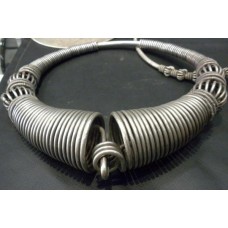A sustainable model for Craft through design
Study on languishing jewelry art and its relevance in modern context, GJSCI unveils Gajra work, the art of Bhuj (Gujarat). This style of jewellery is worn by communities like Rabari, Ahir, Bharvad and Jat-Satvaras, the nomadic tribes of Gujarat.
The objectives of study remained to create a niche market for silver jewellery from Bhuj, to bring the hidden craft of Bhuj to limelight, to develop a sustainable model for Craft through design and technical interventions for it to re-establish in the current context.
Observing and understanding challenges and potential of this craft is a critical need of the hour to create an enabling eco system for the craft sector so that its producers are valued and respected for their skills and they become active stakeholders and beneficiaries of the larger wealth creation process.
Origin of History of Gajra is an age old! The silver market popularly named as Sarafa Bazaar which is around 200-250 years old and is existent from the time of Maharajas. The silver ornaments of Kutch are a reflection of design purity, where the craft of jewellery not only shine for beauty but also they shine to make a difference to the bodies that they adorn.
The study is highlighting its’ Significance. Key views are, 1: Jewellery without solder and only twirls, twists and bends, 2: Unique metal composition, 3: Investment for tribes, 4: Weight of a neckpiece varies from 500gms to 2kg, 5: jewellery that also use for self-defence. The study is also focuses on whole of crafts & manufacture.




